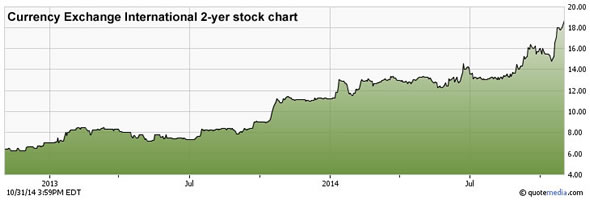Why Small Cap Stock Pickers Win
Every now and then we get confronted with articles in the financial press that one should avoid small cap stocks. The authors usually reference to the higher probability of companies in that market segment or being fraudulent entities.
We agree that looking at the overall market, small cap stocks are riskier than large caps. It’s true that the chance of a small company going out of business is higher than a mature, established one. A small company often doesn’t have the financial strength to cope with setbacks or delays in the development of their product or service.
BUT, and we can’t emphasize this enough, when you spread your investments over several thoroughly researched small cap stocks, you eliminate 95% of the risk. In addition, it’ll be far more rewarding than buying Wal-Mart or Boeing. Time and time again, research shows that a portfolio of smaller issues outperforms most other assets.
So why is it that Wall Street isn’t fond of small caps?
The major problem that fund managers have with small caps is that their funds simply are too large. For example, when a $200 million size fund wants to diversify its assets over 40 different stocks, it would have to invest $5 million in each.
Most stocks featured on Smallcaps.us have a market cap that’s far less than $100 million. So in order for a fund manager to invest $5 million in such a company, he would need to buy at least 5% of the outstanding shares, which is practically impossible without significantly moving up the stock price.
As a result, most fund managers stay away from small caps… professionally that is. We know many fund managers who happily buy small cap stocks for their personal portfolios, because they know, better than anyone else, in which market segment the highest returns are achieved.
Currency Exchange Int’l
They invest in companies such as Currency Exchange Int’l (TSX:CXI – $18.65 & OTCBB:CURN – $16.32), which specializes in buying and selling of more than 80 foreign currencies, wire transfer payments, purchase and sale of foreign bank drafts and international traveler’s cheques, and foreign cheque clearing.

The company has grown significantly over the past quarters. In September, it announced results for the third quarter, ended July 31, 2014. Revenues were $6.8 million, an increase of 80% compared with revenues of $3.8 million in the comparable quarter in 2013. Net income remained the same at $1.5 million for the three month periods ended July 31, 2014 and 2013. However, net income in 2013 included a one-time non-cash gain of $816,000. Excluding the one-time gain in 2013, net income in 2014 would have increased $805,000 or 124%.
And it doesn’t stop there. A couple of weeks ago, Currency Exchange announced that since July 31, 2014 it has signed new agreements with nine financial institutions located in the United States for services including the exchange of foreign banknotes, foreign cheque clearing, and foreign bank draft issuances. The nine financial institutions represent more than 1,100 distinct locations across 14 states.
In less than two years, Currency Exchange’s stock price has appreciated from $6.25 to $18.65 today, up almost 200%. Despite its significant rise, the company’s market cap is still less than $90 million.
These are the types of stocks big institutions and major brokerages won’t invest in. We, as individual investors, can and should.
We’re currently preparing a few reports on companies with the same potential as Currency Exchange, which we’ll publish on Smallcaps.us in November.
| Sign up for our weekly e-mail newsletter and be the first to receive our best ideas and updates. |
| For important disclosures, please read our disclaimer. |
